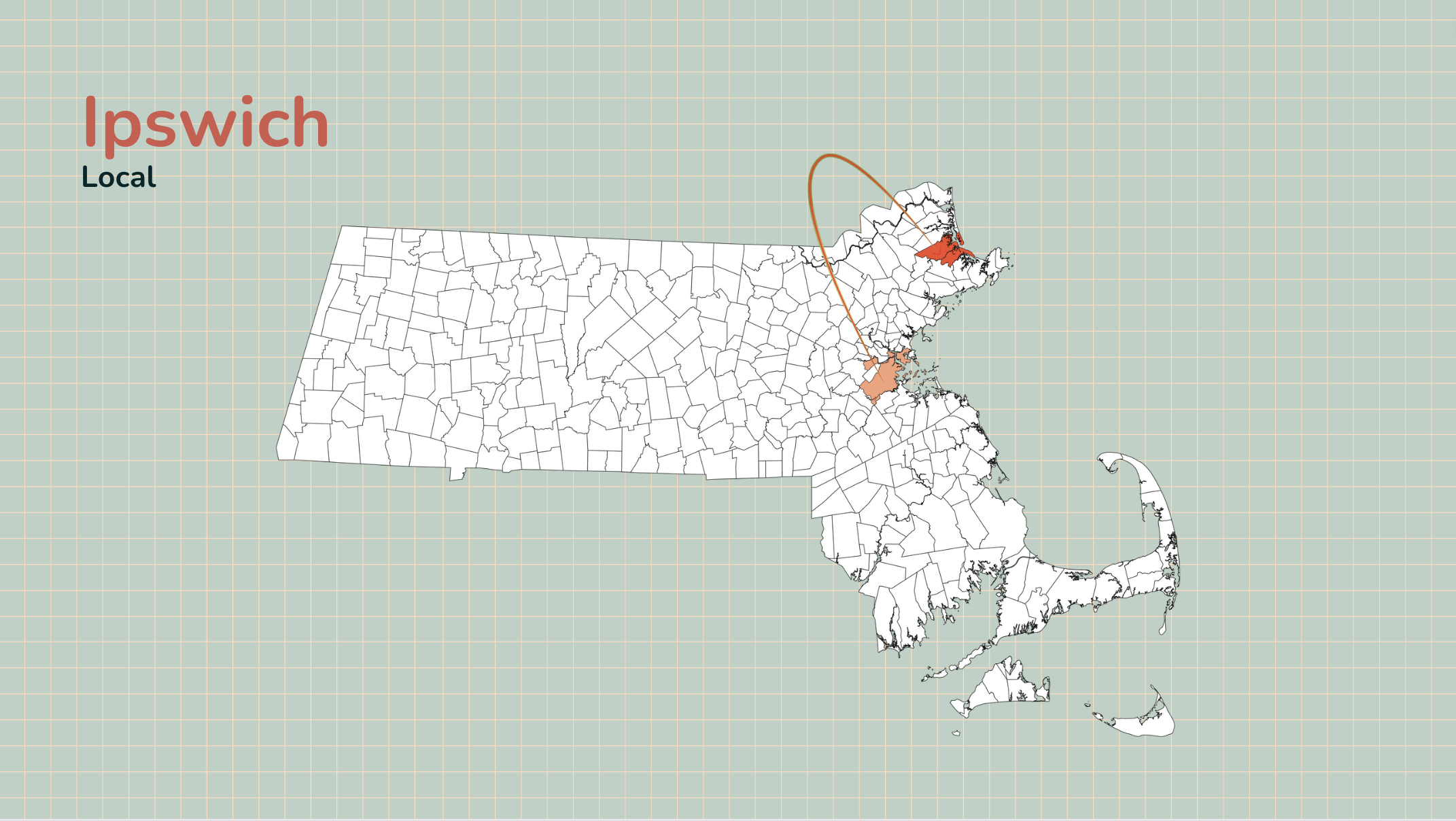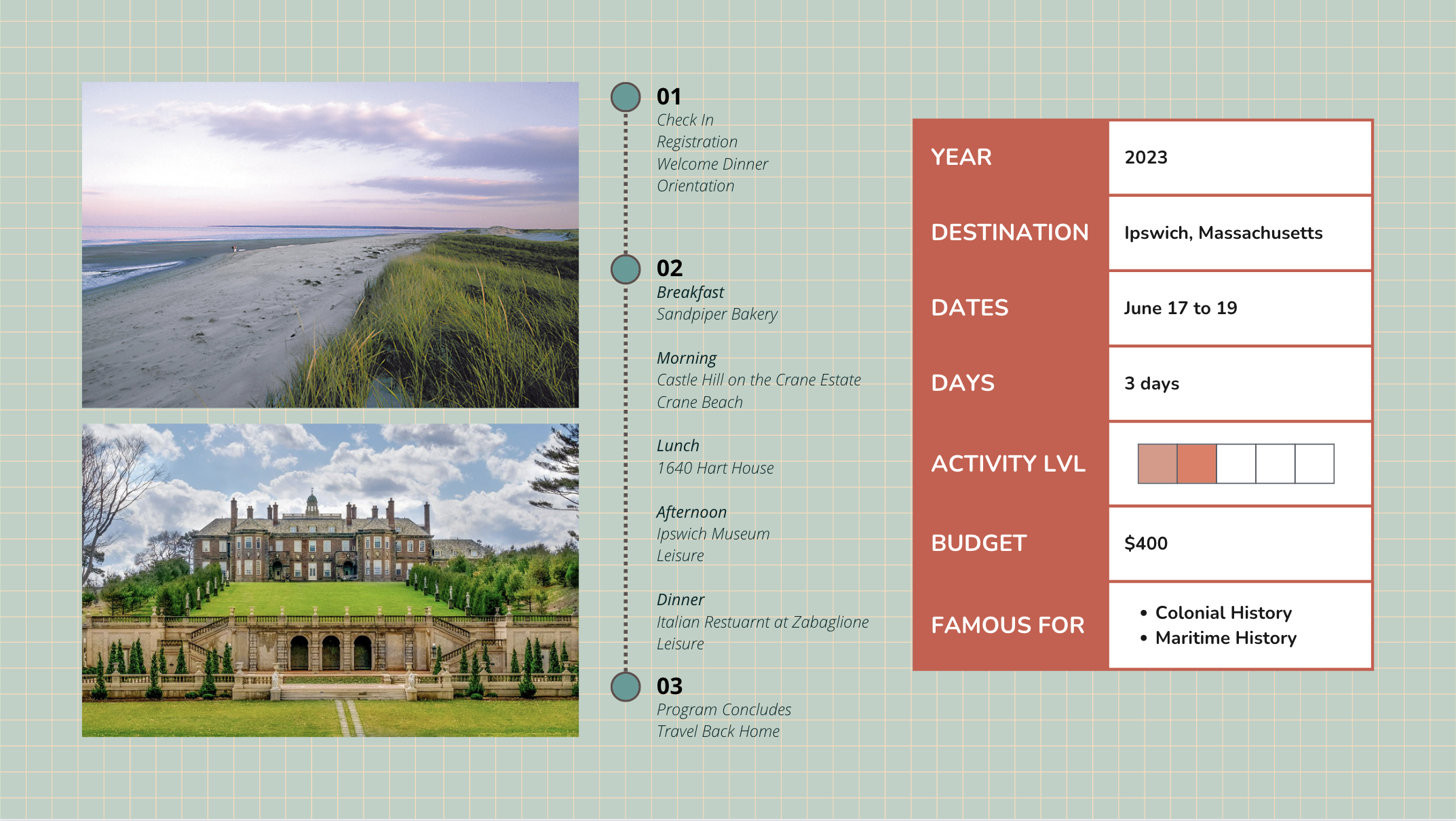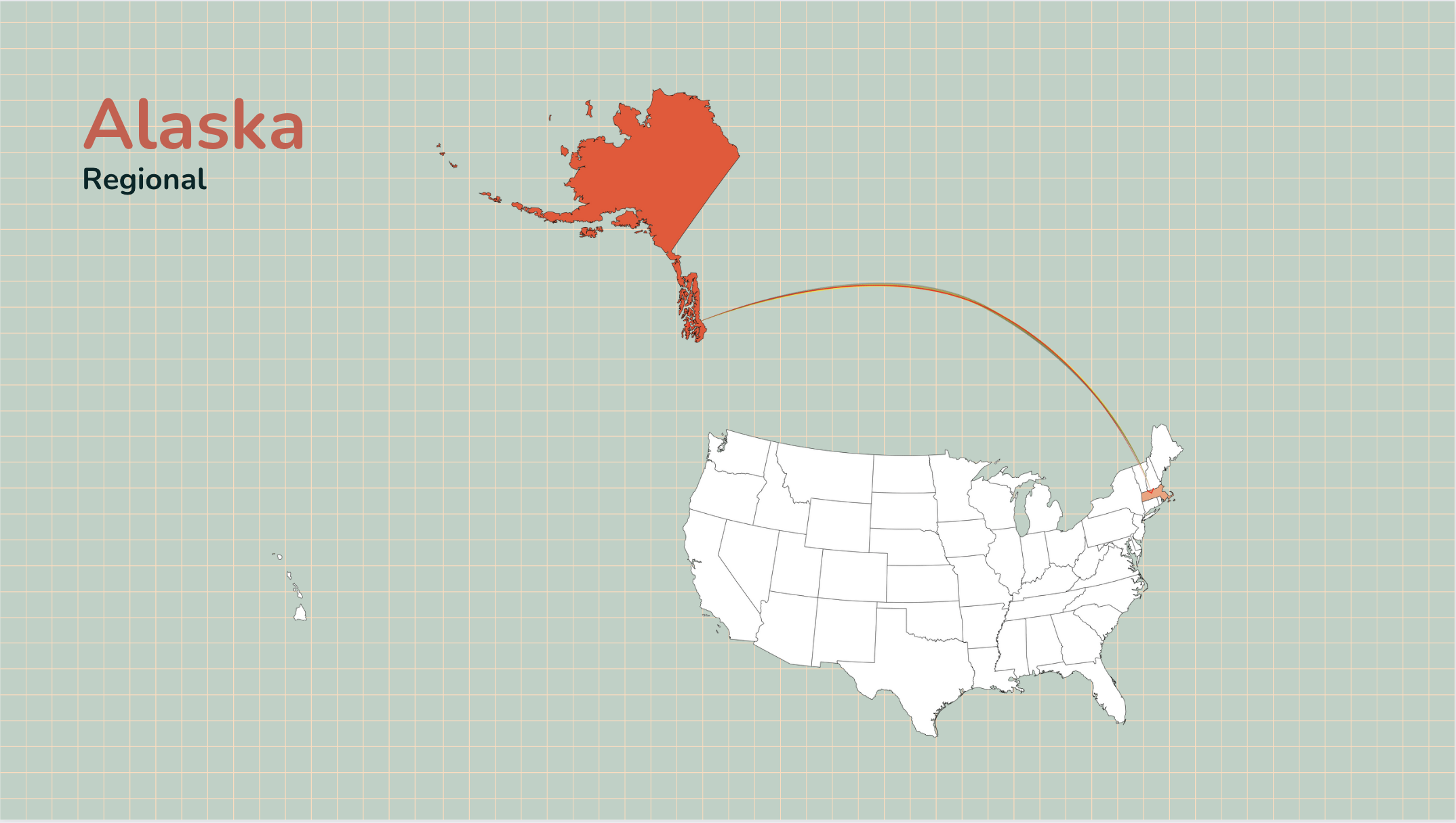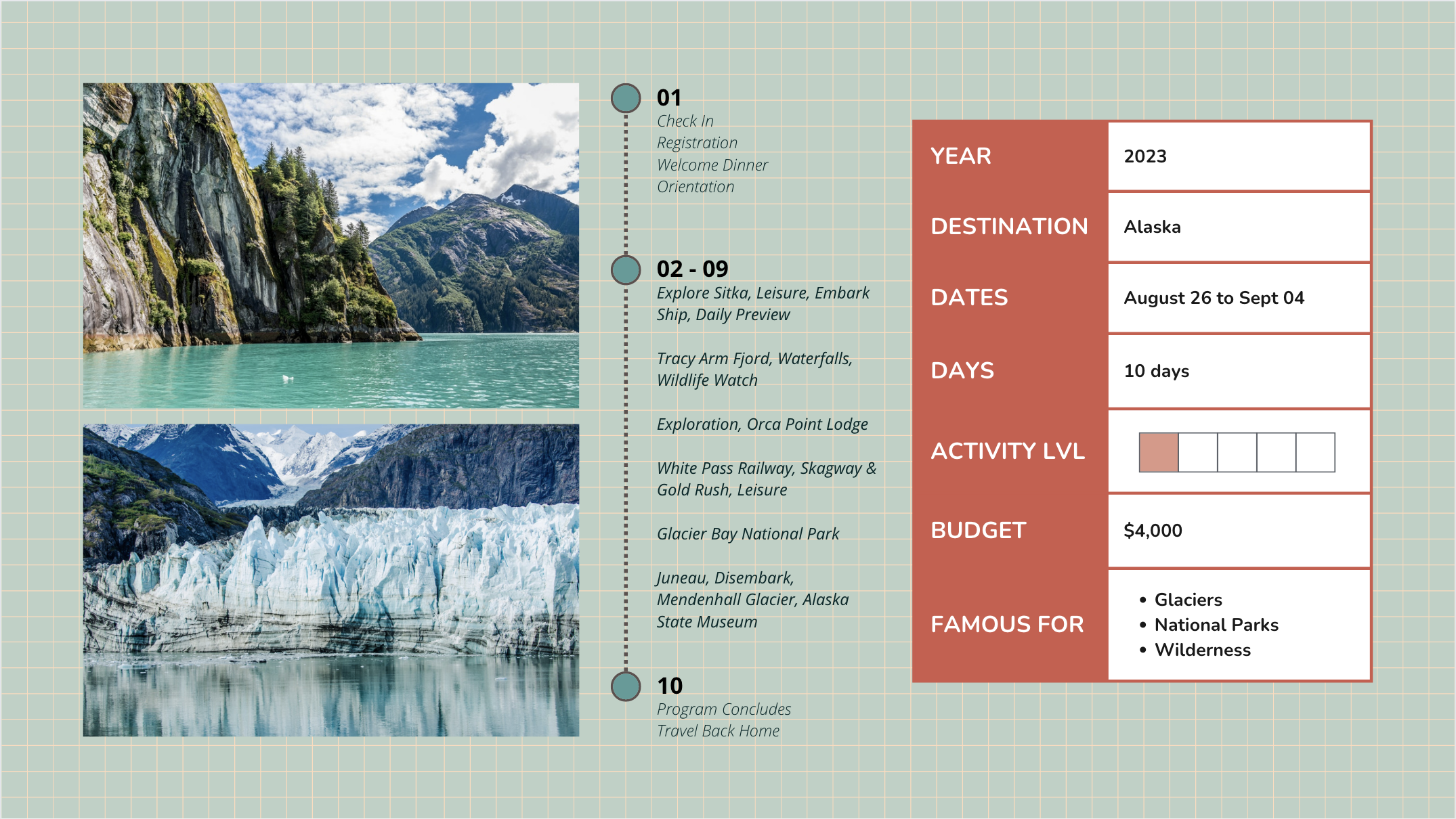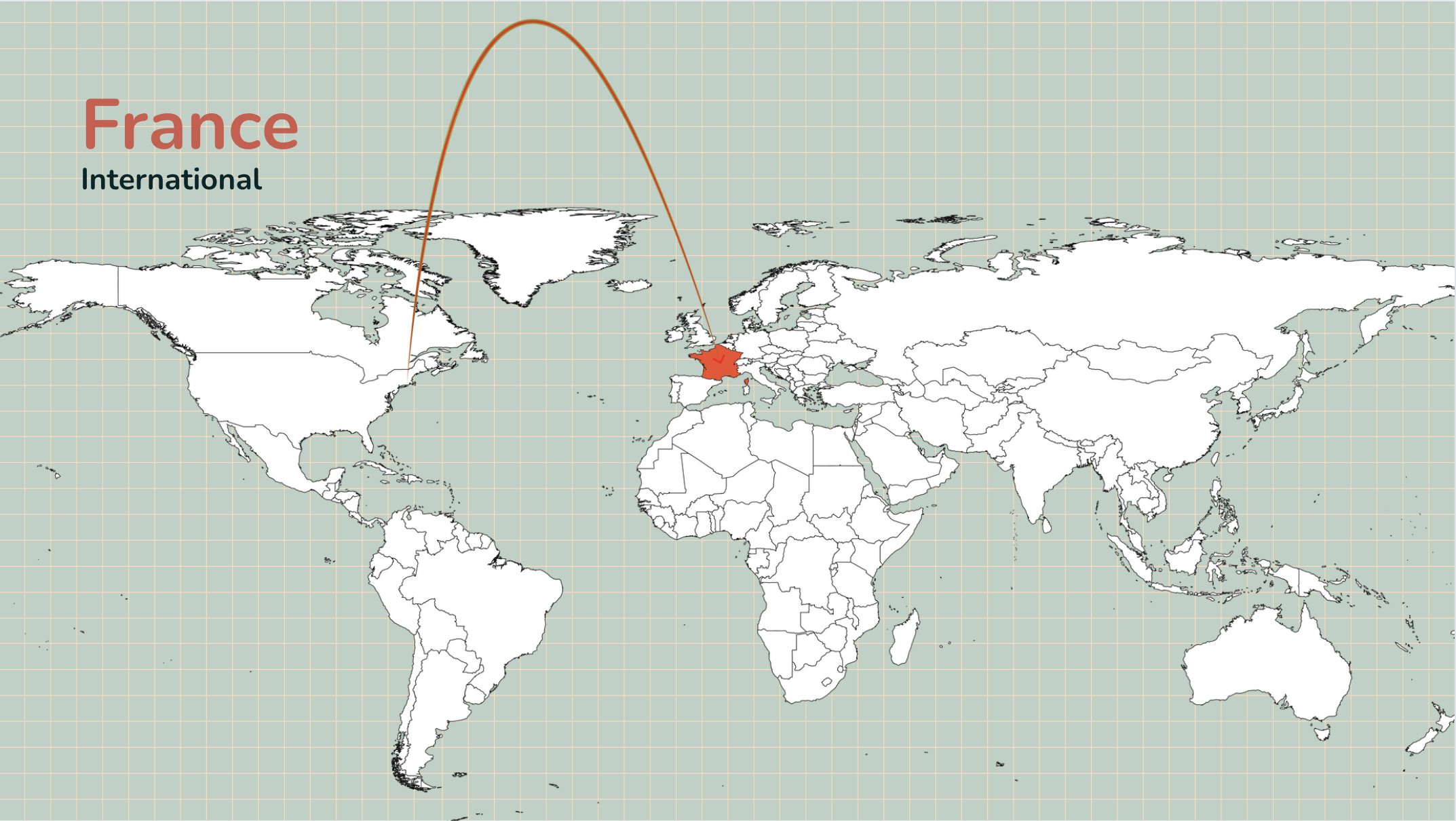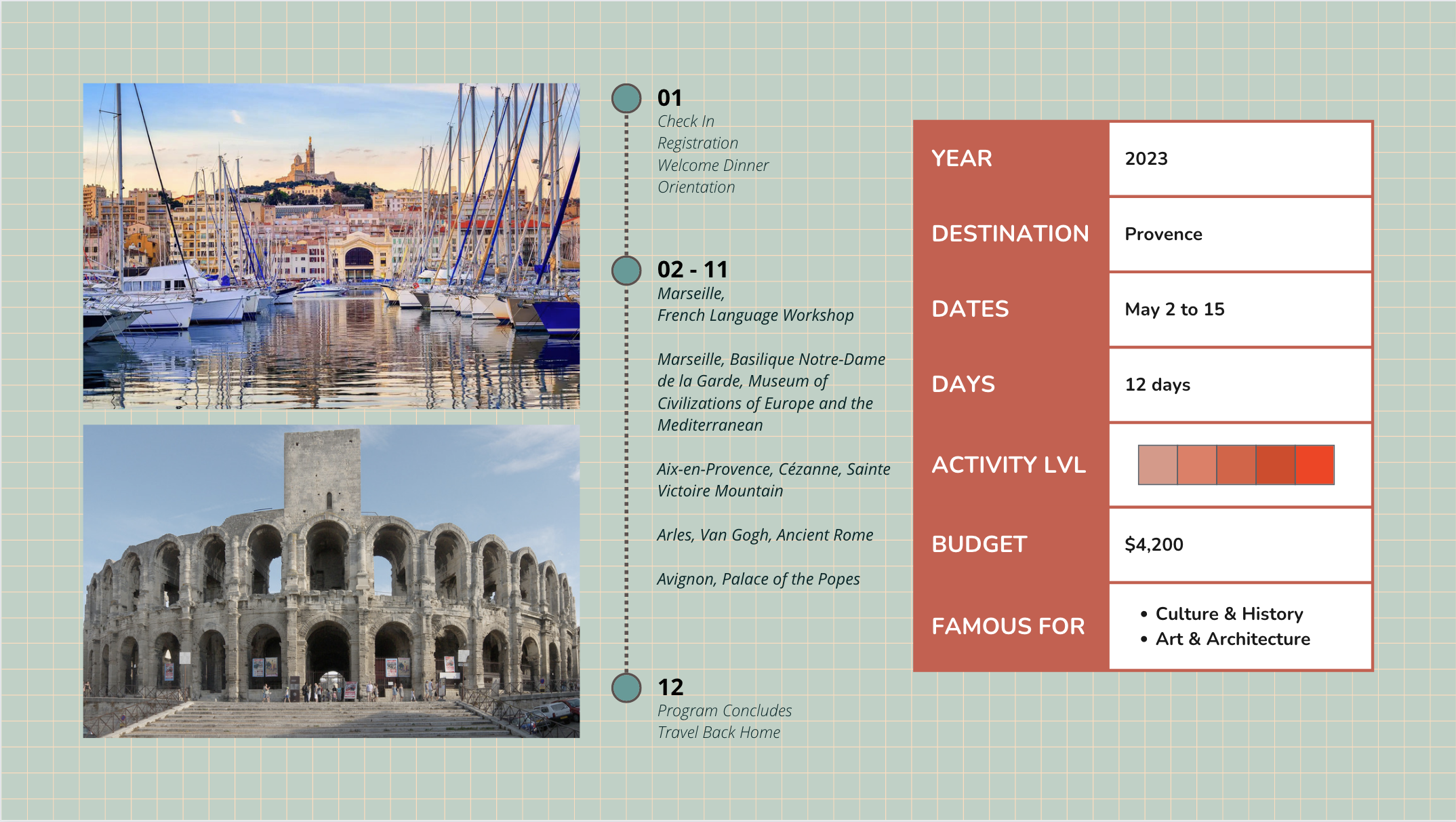Wander Together: An Intergenerational Travel Agency
Click here to watch a project teaser presentation
Wander Together is an intergenerational travel agency that invites younger and older adults to travel together to destinations near and far within their common interests. Our platform aims to encourage intergenerational social connection across age groups to enrich the lives of older adults. We are driven by the ethos that Everywhere Is Home because home is not just a place you live in, but the memories created and shared with others.
For our project, we are interested in facilitating intergenerational interaction for older adults and the younger generations as a way to enrich older adults’ social lives, combat generational segregation, and destigmatize aging. Through our focus groups with 85+ lifestyle leaders and survey with Harvard Wellesley students, we found that there has been some shared misunderstanding of the other generation and perceived differences in interests and ideologies. Therefore, we think it's important to break these stereotypes and highlight the shared interest in social connection across generations. Our goal for Wander Together is to create a space that fosters relationships across generations.
In addition, our travel agency wants to increase interest in the aging space for the travel and hospitality industry, and to design age-ready social infrastructures that help older adults embark on adventures beyond their doors.
With this intergenerational travel agency, we hope to offer subsidized, organized travel to provide safety, comfort, adequate caregiving and bonding for travelers of all ages. We believe that offering the necessary care and accessibility accommodations empower older adults to adventure outside their immediate communities and make memories beyond their everyday lives. At the same time, the model finances younger adults to travel on a budget while creating diverse relationships and learning about the importance of caretaking.
The trips are envisioned to be planned in collaboration with AARP, National Aging Council and with travel companies such as Viking Cruise ship, universities and alumni networks, such as Harvard, MIT and Wellesley. By working closely with these companies and institutions, we will invite applications and conduct thorough interviews and background checks to ensure the safety and comfort of all travelers. We also hope that collaborating with educational institutions can offset the travel fees of younger travelers (e.g. college students) through scholarships. The goals for this are two-fold:
This will encourage early exploration of aging services related careers, as there already exists a large deficit of those involved in home care, geriatric healthcare, and similar fields.
Destigmatizing aging — can help us rid the notion that aging is a time of depression and degradation. Can help resolve the notion, that we saw so clearly in the survey, that older adults and younger adults are too different from each other to share a common interest of traveling together.
How does it work?
Our target demographics for older adults include those who would like to hang out with the younger generations, and have interests in traveling but can’t access companionship for traveling. For now, we are focusing on older adults whose health conditions can sustain traveling granted that there is sufficient assistance from another person, and people who do not necessarily require intense medicalized care throughout the trip. This can include those that experience chronic illnesses (e.g. chronic back pain, arthritis, cardiovascular disease, hearing loss, some vision loss, etc.), and/or some level of mobility barriers (e.g. need to sit down and rest every so often, walk slowly, use walkers, canes, wheelchairs, etc.).
Our target demographic for the younger travelers includes those who would like to travel more and see the world, those who love learning from other generations, and those who have a heart of compassion and patience for caretaking. Based on conversation with 85+ years old interviewees, we identified interests in collaborating with students of medical, nursing, or social work programs, as this creates opportunity for them to gain experience on caretaking skills that is core to their profession.
Here is an overview of how we envision a standard trip planning process would pan out. First, we will begin with the promotion and outreach process to our partnering institutions and sponsors to invite interested travelers to apply for the trip. After that, safety screening will be conducted to vet the participants, before the vetted older and younger travelers can select the travel group they want to join, and be matched with a travel buddy. And then, the travel buddies will meet up for the first time before the trip to get to know each other and make sure they get along to confirm the match. And then finally, some basic safety training and preparation work will take place before everyone is off on their trip.
Our web-facilitated matching mechanism helps older and younger travelers to buddy up based on a variety of factors during their trips. The matching mechanism takes into account preferences for travel destinations, group size, gender, accessibility needs, personal interests and more to curate well-adapted itineraries that meet the needs and desires of all our travelers. After matching with their cross-generational travel buddies, the travelers are provided with basic safety & emergency training to avoid and reduce potential harm caused by virtual crimes, hacking, fraud, theft, sexual harassment during the journey. Additionally, all younger travelers are provided with basic first-aid training to make sure they can react properly should any medical emergency happen during the trip.
To further enforce safety precautions and emergency assistance during the trip, Wander Together provides online 24/7 contact in each destination countries to help point traveler to correct resources, reach an area of safety, and call emergency services such as ambulance, police, etc. Help can be accessed in real time via a 1-1 call, text, or online chat format. A physical handbook will also be distributed before trips to instruct on crises management.
Travel Destinations
Now to travel is to explore, learn, and adventure – whether it's in historical towns, rich with art, architecture, science and culture to the vast wonders of the wilderness and the natural world – our purpose is to disconnect from the monotony of society and stimulate improvement of one’s physical and mental well-being. We’ll now take you through three travel destinations on three varied scales from the local, regional, to international.
For example, travelling from our home base of Boston, we’ll be going up north for a couple of hours to Ipswich. These localized travel options are intended to be weekend getaways where our younger and older travelers can get a break from their daily lives. Our travel platform provides a breakdown of scheduled activities, housing and meal accommodations, travel dates, the intensity level of the overall trip, budget, and what the travel destinations are known for.
Transitioning to the regional scale, we’ve partnered up with Viking Cruise in Alaska. This trip illustrates an experience where you unpack once, get to explore multiple destinations, and is easier on one’s physical health. With this particular trip, it is an immersive nature and wildlife excursion.
Last, we’ll be traveling internationally from Boston to Provence, a region in southeastern France bordering Italy and the Mediterranean Sea. The Wander Together trips are thematic to accommodate the traveler’s interest: it can range from the great outdoors in nature to the arts and even in the academic realm where one can learn about sustainability/environment or gain a new hobby.
For this trip, travelers experience the lives of post-impressionist artists like Cezanne and Van Gogh and learn about the region’s rich culture, history, and architecture.
Financial Model
The financial model for Wander Together is shown below. The cost model is broken up into two parts, including travel costs and program maintenance and administrative fees.
The revenue model is reflective of the first three years when we hope to receive early stages of grant funding from insititutional and corperate partenships.
Let’s wander together!
A group project by Ayusha Ariana, Alexandra Barnes, Prasidh Chhabria, Anagha Kumar, Snow Xu (alphabetically)
Created in the MIT Global Aging in the Built Environment Class by Prof. Joseph Coughlin @ MIT Age Lab








